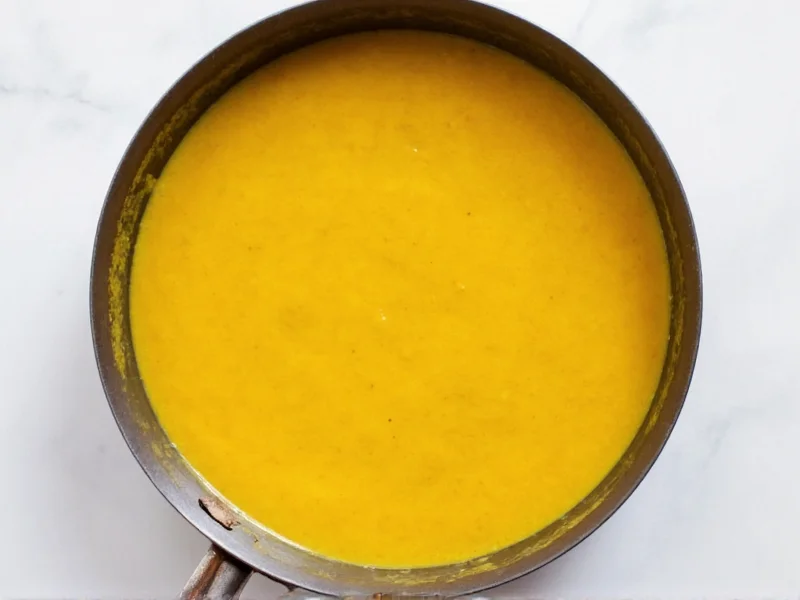When exploring authentic Mexican cuisine, yellow mole sauce stands as one of the eight traditional moles of Oaxaca, each with distinct ingredients and preparation methods. This vibrant sauce represents the culinary diversity of southern Mexico, offering a unique flavor experience that differs significantly from its more widely recognized black mole counterpart.
Historical Roots of Yellow Mole
Yellow mole sauce traces its origins to pre-Hispanic Mexico, where indigenous Zapotec and Mixtec cultures developed complex sauces using native ingredients. The addition of European elements after colonization refined the recipe into its current form. Unlike black mole which incorporates chocolate, yellow mole maintains a brighter profile through careful selection of specific chilies and spices.
Key Ingredients That Define Yellow Mole
The distinctive yellow color comes primarily from a combination of guajillo peppers, tomatoes, and yellow corn tortillas. Additional components typically include:
- Guajillo and pasilla peppers (for base flavor)
- Tomatoes or tomatillos
- Yellow corn tortillas (for thickening)
- Garlic and onions
- Spices like cumin, cloves, and Mexican oregano
- Optional additions: almonds, sesame seeds, or hoja santa leaves
What sets yellow mole apart from other varieties is the absence of chocolate and the emphasis on ingredients that maintain its characteristic golden hue. The preparation process involves toasting, grinding, and slow simmering to develop complex flavors without the bitterness found in darker moles.
| Mole Variety | Color Source | Flavor Profile | Common Protein Pairing |
|---|---|---|---|
| Yellow Mole | Guajillo peppers, tomatoes | Tangy, moderately spicy | Chicken, turkey |
| Black Mole | Chilhuacle negro, chocolate | Rich, complex, slightly sweet | Chicken, turkey |
| Red Mole | Ancho and guajillo peppers | Balanced heat and sweetness | Beef, chicken |
| Green Mole | Tomatillos, cilantro, pumpkin seeds | Herbaceous, fresh | Chicken, fish |
Traditional Preparation Methods
Authentic yellow mole sauce preparation requires patience and attention to detail. The traditional process involves:
- Dry-toasting whole spices and chilies to release essential oils
- Rehydrating dried chilies in hot water
- Grinding ingredients on a metate (traditional stone mortar) or modern blender
- Slow-cooking the sauce for several hours to develop flavors
- Straining to achieve smooth consistency
Many Oaxacan families maintain secret ingredient ratios passed through generations. The most time-consuming aspect involves the multiple toasting and grinding stages that create the sauce's signature depth of flavor. Modern cooks sometimes simplify the process using pre-ground spices, though purists argue this compromises authenticity.
Serving Yellow Mole in Traditional Context
In Oaxacan cuisine, yellow mole typically accompanies poultry dishes, particularly turkey or chicken. Restaurants serving traditional Oaxacan food often present it as part of a multi-mole tasting platter alongside black, red, and green varieties. The sauce traditionally accompanies:
- Enmoladas (mole-soaked tortillas)
- Pollo en mole amarillo (chicken in yellow mole)
- As a base for tamales
- With rice and warm tortillas
Unlike black mole which often features prominently in celebratory occasions, yellow mole appears more frequently in everyday meals throughout Oaxacan households. Its lighter profile makes it suitable for various times of day and occasions.
Finding Authentic Yellow Mole Sauce
Locating genuine yellow mole sauce outside Oaxaca presents challenges. Commercially available "mole" products often represent simplified versions of black mole rather than the eight traditional varieties. For authentic yellow mole sauce:
- Seek specialty Mexican markets with Oaxacan products
- Look for products labeled "mole amarillo" specifically
- Consider making from scratch using traditional recipes
- Check restaurants specializing in Oaxacan cuisine
When evaluating commercial products, check ingredient lists for chocolate (which shouldn't appear in authentic yellow mole) and artificial coloring. The best products maintain the natural yellow hue from peppers and tomatoes without additives.
Storage and Shelf Life Considerations
Properly stored yellow mole sauce maintains quality for varying periods depending on preparation method:
- Refrigerated (freshly made): 4-5 days
- Refrigerated (commercial): Follow package instructions, typically 2-3 weeks after opening
- Frozen (portioned): 3-6 months
- Dry mix (unprepared): 6-12 months in airtight container
When freezing, portion the sauce into ice cube trays for convenient single-serving amounts. Thaw overnight in the refrigerator before reheating gently over low heat, adding small amounts of water or broth if needed to restore consistency.











 浙公网安备
33010002000092号
浙公网安备
33010002000092号 浙B2-20120091-4
浙B2-20120091-4